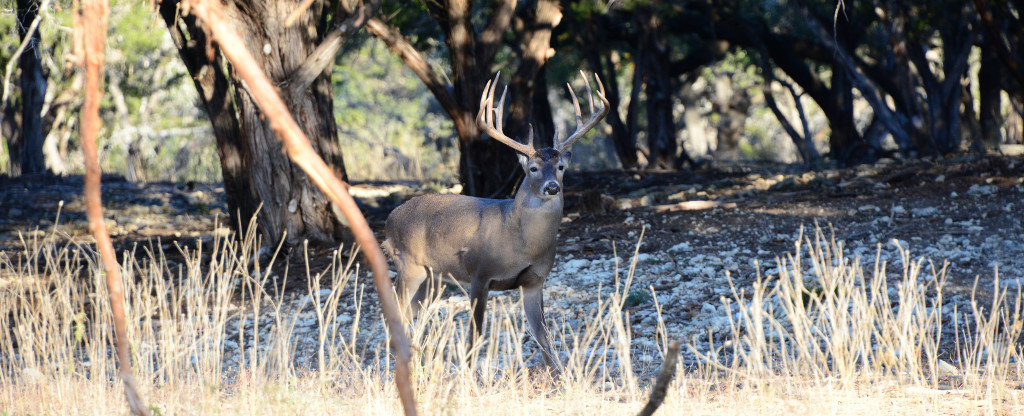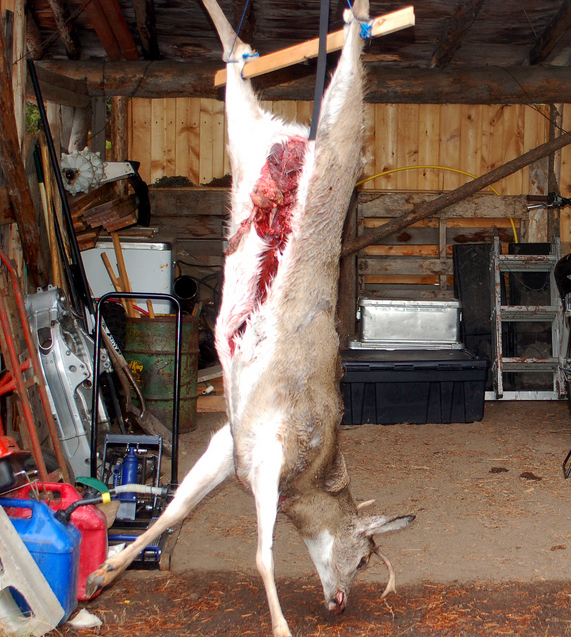Hunters tend to use whatever tools they have available in an attempt to gain any potential advantage over their prey. Nowadays, this tends to mean the latest and greatest hunting gear, from trail cameras to laser sights and more. However, there are also a number of more traditional techniques that can be equally as effective in helping to track deer and understand their behavior. Scrapes, rubs, beds, trails and deer poop can all be valuable tools to the hunter skilled enough to know how to read and interpret these signs. Still, this article will focus on another useful, but often overlooked sign - deer tracks.
Although many hunters feel that there is no real information to be learned from tracks, the truth is that knowing how to read deer tracks can actually provide you with quite a bit of useful information, such as the species of deer, size and sex. Still, being able to determine this just from a set of tracks does take a bit of knowledge. This is why we'll now present you with all you need to know to read and interpret the signs properly.
What Do Deer Tracks Look Like?

Although virtually any hunter can surely identify deer tracks, it's still important to give a quick overview of exactly how they look in case you're unfamiliar. Like many other species, deer have split hooves, which are pointed in the front and rounded in the back. This gives the deer track a distinctive heart-shaped look that is quite easy to identify. Depending on the size of the deer and whether it was running, walking or standing, the two halves of the front hooves may be tight together or splayed widely apart. When the deer is in deep mud/snow or running quickly, the tracks will usually also show a pair of dewclaws behind the hooves.
Whitetail vs Mule Deer Tracks
If you live in an area that is home to both whitetails and mule deer, the first thing the tracks can tell you is which species they came from. At times it can be difficult, if not impossible to tell them apart depending on the size of the animal, the age of the track and how many tracks you have to judge by. However, there is still one major difference to look for that can help you tell them apart.
The hooves on a whitetail deer tend to be straighter on the outside, going from the rounded back of the hoof and tapering down in a straight line down to the pointed front of the hoof. If you look at white tailed deer tracks, even on bigger bucks, you'll generally see a consistent tapering, with the biggest part of the hoof being near the very back. However, if you look at mule deer tracks, you will see that the outside of the hoof is more curved, with the widest part located near the middle of the hoof. This gives the tracks a much more rounded shape instead of the straighter shape of whitetail deer tracks.
Although the differences may seem slight at first, with a little practice, you should easily be able to tell the two apart if you've got a nice set of tracks to examine. Still, it doesn't hurt to spend some time studying pictures of deer tracks so you can familiarize yourself with the differences between whitetail and mule deer tracks, as this way you'll know what you're looking for when you head out into the field. Here are some pictures of deer tracks from a whitetail and from a mule deer to get you started:
Understanding Behavior from Deer Tracks
Just like you can use scrapes, rubs, beds and trails to understand where and when a deer travels, the tracks can also tell you these same things. By looking at the deer tracks' direction, you can obviously tell which way the animal was heading. If you can then use keys to determine how fresh the tracks are, you may be able to get a better idea of the times it normally passes through the area.
There are a number of things that can help you determine how fresh a track is. For instance, if the edges of the track are still solid and pointed, the track is likely fairly fresh, as weather and time will begin to start rounding the edges of the mud fairly quickly. Fresh tracks look like the hoof cut straight into the mud, whereas they begin to look more rounded and less defined over time. Also look around for any small bits of mud that fell off the hooves and check to see what condition they are in, such as wet, dried out, stuck back to the ground due to rain.
If you have a set of tracks, it is usually quite simple to tell whether the deer was walking or running just by looking at the distance between the tracks. However, if you have a single track, you'll need to do a bit more searching and look for keys that show it was running, such as mud and debris thrown by the hoof's impact or if the track looks slightly more elongated or splayed than normal.
Deer Tracks in Snow
Finding a set of deer tracks in snow can also be a huge help for a number of reasons, first and foremost because the snow enables you to find more consistent sets of tracks in areas where there may otherwise not be any due to the ground and terrain. Tracks in snow can also tell you a bit about how long ago the deer passed through. Look for things like how much snow has filled in the tracks. If there's a crust on the top layer, you can also tell whether it formed before or after the track was made by whether or not the deer had to break through the crust. Like before, looking at deer tracks in snow photos online can help you to become more familiar with all the various tell-tale signs.
Determining Sex, Age and Size
One of the most important things that many hunters want to know is whether or not the animal they are following is a big buck, which is exactly what the tracks can tell you. Generally, it can be quite difficult to distinguish between big does and smaller bucks, but there are still a number of signs that can be used to determine size, sex and age.
Since most hunters are concerned with bagging a trophy buck, we'll start off by looking at the distinguishing factors that help to identify large buck tracks. As you can imagine, these are by far the easiest types of tracks to distinguish, as their size obviously sets them apart. Due to their weight, the front hooves of a bigger buck tend to splay quite far apart, which is something that's quite easy to see on the track. All hooves will splay apart when a deer runs, but only bigger, heavier deer's front hooves will be splayed when standing or walking. The more the deer weighs, the more the hooves will splay apart, meaning you can generally judge the size of the deer not only by the size of its track, but also by how far apart the two halves of each front foot are.
The overall size of the track is generally a decent indicator of age, as a deer's hooves obviously continue to grow as they age until they reach their fully grown size at around three to five years old. Numerous books, charts and other materials are available that can show you the approximate size ranges for deer tracks in each age group. These are again quite useful at giving you at least a bit better idea of what to look for.
Still, just because you can approximate the age and size of the animal doesn't mean you will know whether it's a buck or a doe. As stated previously, in terms of size, there is almost no difference between the track of a small buck or a larger doe. Instead, there are a number of other things you'll need to look for, which generally require a full set of tracks instead of just one or two.
Male deer are generally wider on the front and smaller on the back, whereas does are usually just the opposite, being slightly heavier in the hind end and with a skinnier chest. This factor causes the legs of does and bucks to be slightly different distances apart, which becomes noticeable when looking at tracks from a deer walking. If the tracks are from buck, the tracks from the front hooves should be slightly wider than those left by the back hooves. On does, the opposite is true, and the back tracks should be slightly wider than the front. If the back tracks stepped in the exact same location as the front, the tracks are generally from a smaller, less developed deer.
Final Words
By understanding all of these signs, you can sometimes give yourself a better idea of whether a specific area is worth hunting or not. Looking closely at the tracks can also help you to identify specific deer, as often the tracks of larger bucks will have some distinguishing feature that you can recognize and then use to track its movements throughout the season. All in all, there is really no end to the number of things you can learn from deer tracks if you're patient enough to learn how to read and understand the signs.






